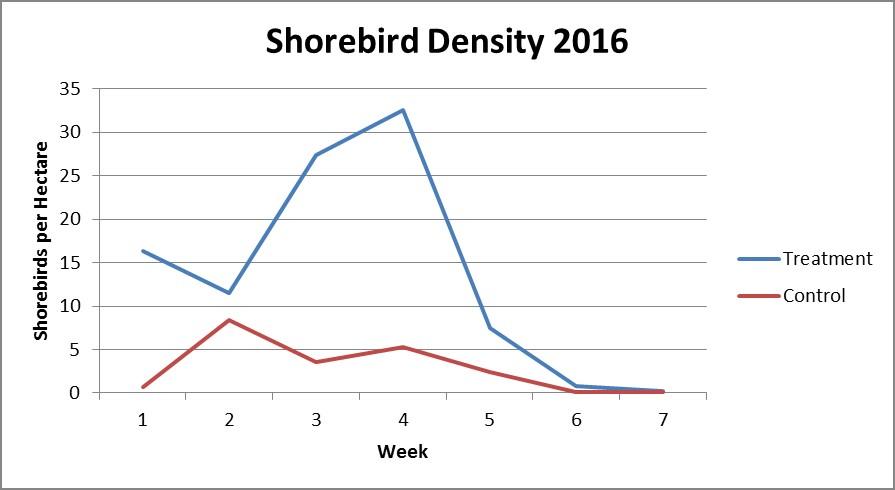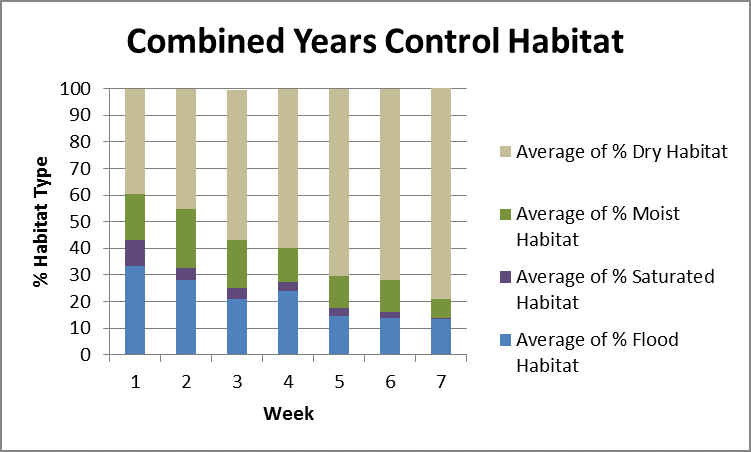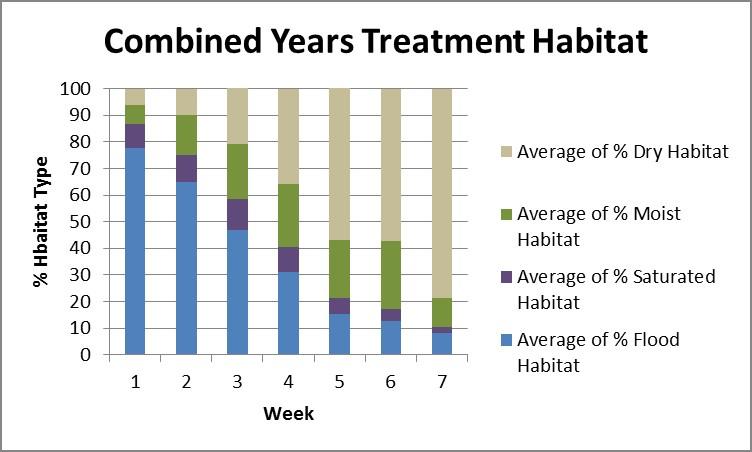Situated on the western side of the San Joaquin Valley in Merced County, the Grasslands Ecological Area represents the largest contiguous wetland complex in California’s Central Valley. The Grasslands is a web of federal, state, and private lands that provides essential habitat to millions of overwintering and migrating waterbirds. The private lands that exist in the GEA are mostly all duck clubs – wetlands managed to promote habitat for ducks and geese during the hunting season (October through January). While these impoundments provide great habitat for a myriad of species, their typical management does not target migrating shorebirds. Duck club managers generally start draining their wetlands in March once the majority of waterfowl have headed north, but shorebird migration peaks in April. As a result, shorebirds encounter less available flooded and moist soil habitat to forage on as they journey to their breeding grounds.

In 2015 and 2016, Audubon California partnered with a number of duck clubs in the GEA to implement a gradual drawdown of water from April 1st to May 1st. As a seasonal technician for Audubon I monitored the success of this new strategy. For seven weeks I counted waterfowl and shorebirds and recorded habitat conditions at ten different duck clubs. I had 65 total survey areas: 37 treatment areas with the new gradual drawdown and 28 control areas managed in the conventional manner with rapid drawdown in March. Even before analyzing the final data, it was clear that shorebirds took a liking to the gradual drawdown. As control areas dried out and grew lush with vegetation, the treatment areas maintained acres of inches-deep water and exposed mudflat, perfect for everything from long-billed curlews to peeps (Figures 2 and 3). Peak shorebird densities landed on week 4 of the field season (April 25th and 26th) with 32.5 shorebirds per hectare (Figure 1).

The results I encountered differ from what was observed in 2015. Although the peak densities were similar, they occurred almost two weeks sooner in 2015 (April 13th and 14th). What’s more, shorebird counts in control areas were miniscule in 2015. Only 301 shorebirds were observed, compared to 2,038 in 2016 (Table 1). This may be a result of worse drought conditions in 2015 that left the surrounding habitat matrix desiccated at a sooner date. Gradual drawdown at duck clubs may be of particular importance in years of extreme drought.
The highlight of the season came when I observed a single pectoral sandpiper (Calidris melanotos) amongst a flock of dowitchers. This was a lifer bird for me and a rather rare occurrence for the Central Valley. Other perks of the job included watching peregrine falcons hunting ducks, observing gopher snakes swimming through canals, and marveling at the sheer numbers of wildlife the valley can support when we set aside the habitat. The duck club owners and managers were very gracious to participate in this project, and their expertise in controlling water flows and other habitat characteristics was invaluable.






